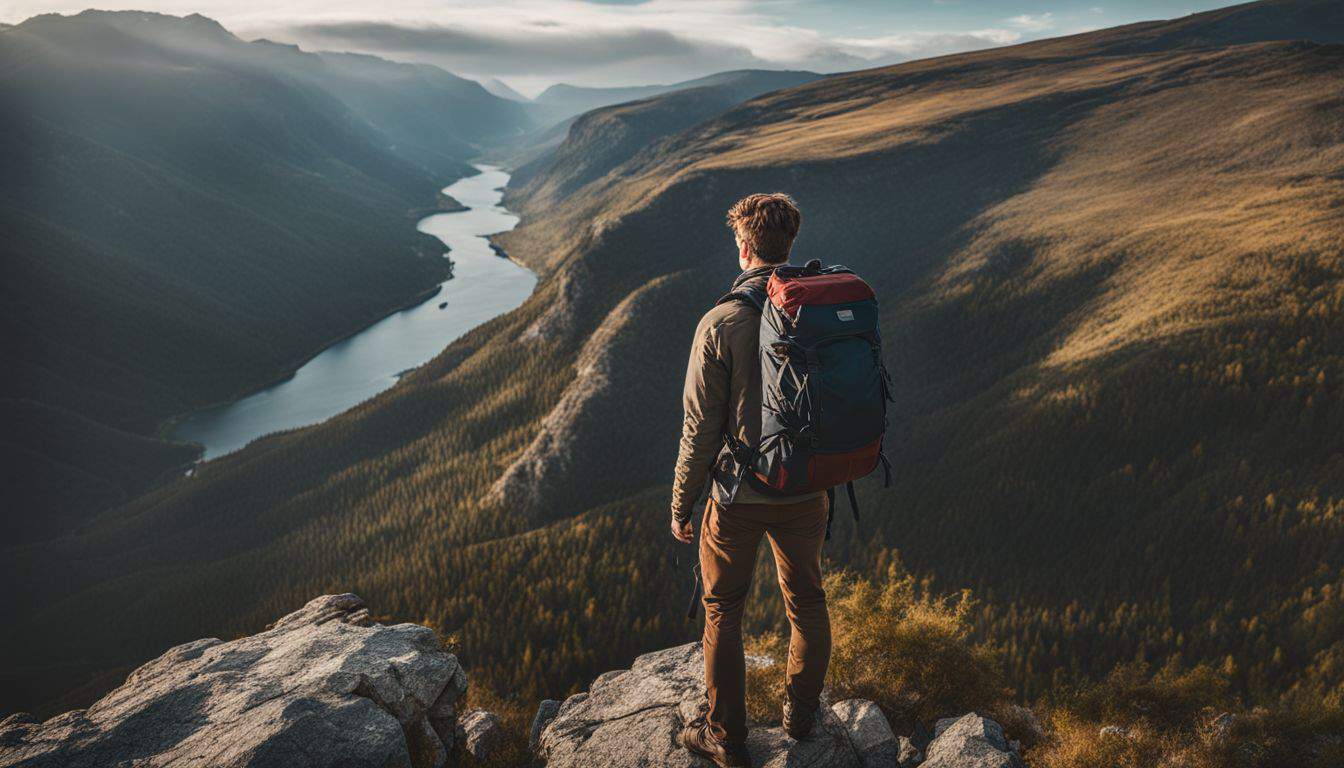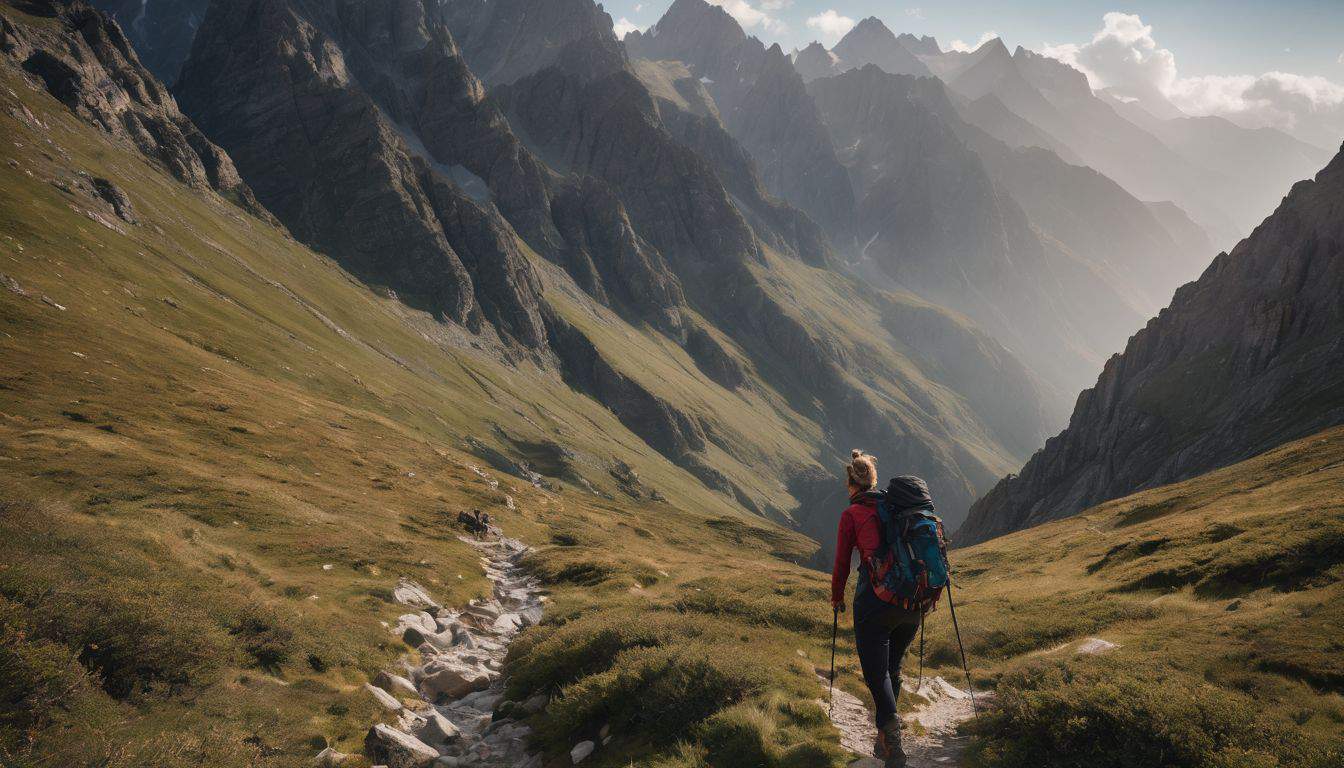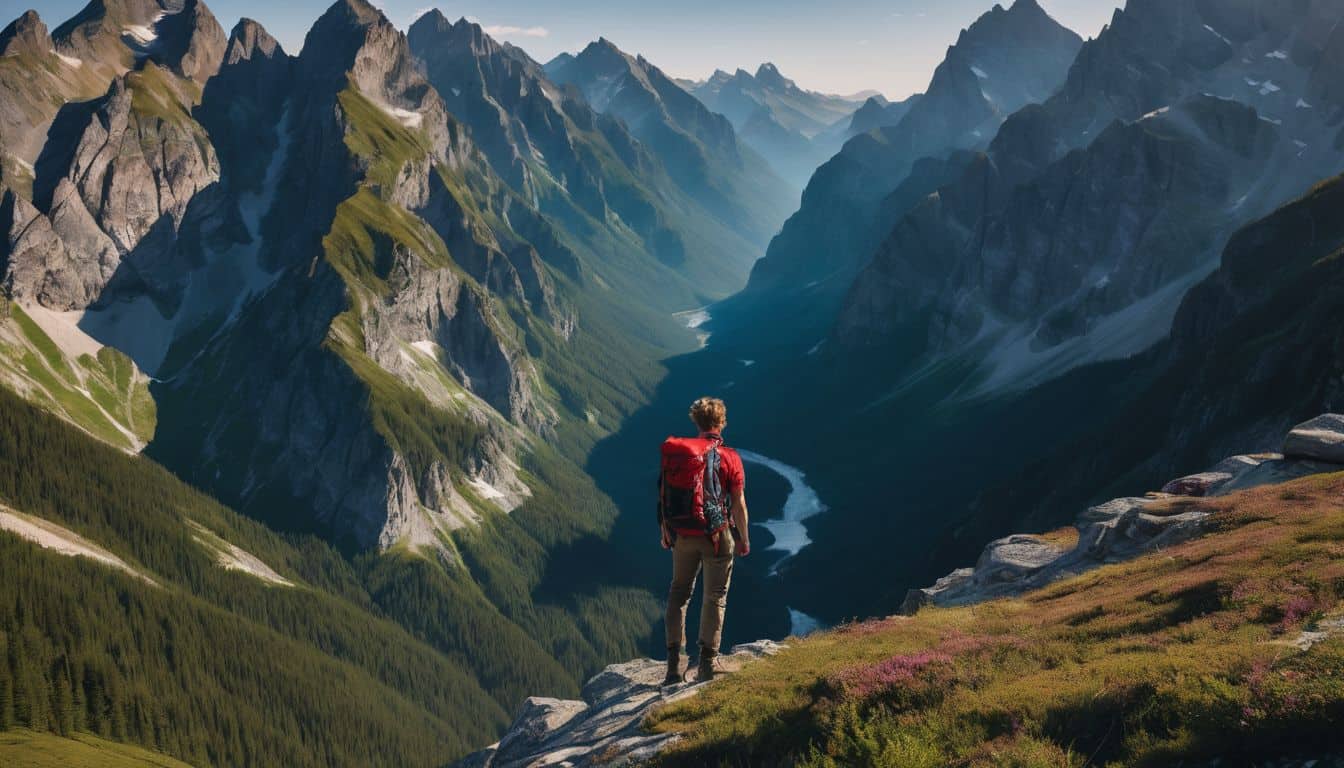As someone who’s felt the adrenaline rush of conquering a daunting peak, I can tell you firsthand that mountain adventures are fueled by both the thrill and unpredictability. But there’s always an underlying factor – knowing that survival in such wild terrains begins with being properly prepared.
In this article, we’ll delve into 11 critical strategies to ensure your safety while embracing Mother Nature’s majesty on any challenging journey through her towering highlands. So lace up those hiking boots and get ready; together, we’re about to conquer life’s most rugged trails!
Key Takeaways
- Proper preparation is crucial for surviving in the mountains. This includes packing the right gear, learning essential skills, and telling someone about your plans.
- Important survival skills include one – handed fire starting, finding and treating water sources, retaining heat, communication techniques, knot tying, basic medical and trauma skills, navigation strategies, utilizing light sources effectively, identifying edible plants carefully.
- Mastering these mountain survival strategies can greatly enhance your chances of staying safe and conquering any challenge nature throws at you. Remember to prioritize safety by never hiking alone if possible and always letting others know about your plans.
Why Preparation Matters for Surviving in the Wilderness
I always tell people that being ready is the key to staying alive in the wild. It’s more than just packing the right gear. You need to learn skills like how to find food and build a shelter before you go on your adventure.
Telling someone where you plan to be and when you’ll come back is also part of getting ready. This way, if something goes wrong, they will know where to look for you.
It’s not fun trying to make it in nature without planning ahead first. Without good prep work, things can get tough real fast out there in the woods or up a mountain side. And don’t forget water! Staying well-hydrated is super important because your life could depend on it if things turn south quickly while out exploring.
Plus, starting early at daybreak can give you an edge by making your activities safer and more effective.
Survival Skill #1: One-Handed Fire Starting

I want to share with you a key survival skill – one-handed fire starting. This is an essential tool in my mountain survival strategies. Here are the steps:
- First, find dry wood. Look for small sticks and twigs.
- Next, gather bits of dry grass or leaves. These will be your tinder.
- Use your dominant hand to hold a flint and steel striker.
- Strike the flint with the steel to create sparks.
- Aim these sparks at your tinder to catch fire.
- Slowly add more twigs and sticks to grow your fire.
Survival Skill #2: All Things Water
There’s no doubt water is key for staying alive in the wild. So, let’s dig into “Survival Skill #2: All Things Water.”
- Learn how to find water sources. Rivers and lakes are your best friends.
- Always carry a tool for water filtration. This keeps you safe from bad bugs in the water.
- Hydrate often. Don’t wait until you’re too thirsty.
- Never drink water straight from an unknown source without treating it first.
- Practice good water conservation habits like not wasting any drops.
- Have a secure container for water storage on hand at all times.
- Be aware of basic water safety rules to avoid slipping or drowning incidents.
- Master the art of collecting rainwater or morning dew if there are no rivers or lakes nearby.
- Make sure your drinking water is always clean and clear – this helps keep you healthy and strong.
Survival Skill #3: Retaining Heat
Retaining heat is really important when you’re trying to survive in the mountains. Here are some strategies that can help:
- Build a shelter: Find or make a shelter that can protect you from the cold wind and snow.
- Start a fire: Having a fire can keep you warm and also provide light and cooking heat.
- Use insulating materials: Find materials like leaves, grass, or pine needles to line your clothing and bedding. They’ll help trap heat and keep you warmer.
- Wear appropriate clothing: Dress in layers and wear clothes made of wool or synthetic materials that wick away moisture. Avoid cotton, as it doesn’t retain heat well when wet.
- Use bedding: If you can, find or make something to lie on, like thick branches or leaves. This will create insulation between you and the cold ground.
Survival Skill #4: Communication
Communication is a crucial skill when it comes to surviving in the mountains. Here are some ways you can dominate communication in your mountain survival strategies:
- Use signaling devices like whistles, mirrors, or flares to attract attention and call for help.
- Learn Morse code or other forms of emergency signals to communicate messages without using words.
- Memorize important phone numbers or emergency contacts in case you don’t have a cell phone signal.
- Practice using hand signals to communicate silently with others in your group.
- Carry a portable radio or walkie – talkie for communication over long distances.
- Familiarize yourself with emergency communication protocols like distress signals or SOS codes.
Survival Skill #5: Cordage, or How to Tie Knots
Cordage is a vital skill in mountain survival. Here are some important facts about tying knots:
- Knots are used to secure branches and logs for building shelters.
- They keep tarps in place during strong winds and rainstorms.
- Tying knots quickly and automatically is crucial for survival.
- Knot – tying can be used for building shelters, setting snares, and creating survival tools in the wilderness.
- It’s often overlooked but improves your chances of surviving.
- Mastering knot – tying is one of the five basic survival skills everyone should learn.

Survival Skill #6: Basic Medical and Trauma Skills
Basic Medical and Trauma Skills are essential for surviving in the wilderness, especially in mountainous environments. Here are some important skills to master:
- Learn how to assess and treat common injuries like cuts, sprains, and burns.
- Understand how to immobilize fractures or dislocations until help arrives.
- Know how to recognize and treat hypothermia and frostbite.
- Learn CPR and basic life support techniques.
- Carry a well – stocked first aid kit with essential supplies like bandages, gauze, and antiseptic wipes.
- Practice creating emergency splints using available materials in the wilderness.
- Understand the signs of dehydration and know how to properly rehydrate yourself or others.
- Learn how to identify and treat allergic reactions or insect bites.
Survival Skill #7: Navigation
Navigation is a crucial skill for surviving in the mountains. Here are some important tips to help you navigate successfully:
- Use orienteering techniques to find your way.
- Learn how to read maps and use a compass effectively.
- Familiarize yourself with different navigational tools, like topographic maps and GPS units.
- Pay attention to landmarks and use them as reference points.
- Develop track awareness by observing and remembering your surroundings.
- Practice identifying different landforms and geographic features on a map.
- Stay aware of your position and direction at all times.
- Use your compass skills to determine which way is north.
- Stay updated with current weather conditions, as it can affect navigation.
Survival Skill #8: Utilizing Light
I love using light to survive in the mountains. Here are some important ways to utilize light:
- Create illumination: Light sources like flashlights, headlamps, and lanterns can provide visibility during the dark hours.
- Master firemaking: Knowing how to start a fire is essential for warmth, cooking food, and signaling for help. Use methods like flint and steel, magnifying glass, or even a soda can and chocolate.
- Learn wilderness navigation: Carrying a compass and learning how to use it effectively in low light conditions can help you find your way back or to safety.
- Signal for rescue: Utilizing light signals such as flashing SOS with a flashlight or using reflective materials can catch the attention of search parties.
- Stay visible at night: Wear reflective clothing or attach glow sticks to yourself so that you can be easily seen in the dark.
- Be prepared with backup lighting: Carry extra batteries or alternative light sources like chem lights or glow sticks as backup options.
- Use natural light sources: During daylight, take advantage of natural sunlight for navigation and improving visibility.
- Practice backcountry cooking techniques: Learn how to cook meals using minimal equipment and portable stoves that rely on lightweight fuel sources like propane or butane.
- Illuminate your shelter: Hang lanterns or use headlamps inside your shelter to create a well-lit space during the night.
- Be mindful of darkness-induced dangers: Darkness increases the risks of falls, injury, and disorientation, so always exercise caution during nighttime activities.
Survival Skill #9: Identifying Edible Plants
Edible plants are important to know in mountain survival situations. They can provide a reliable food source when animals are not available. Proper identification is crucial to avoid eating poisonous plants. Here are some common edible wild plants to be aware of:
- Dandelion: The whole plant is edible, including the leaves and flowers.
- Nettles: Be sure to wear gloves while handling them, but once cooked, they make a nutritious addition to your meal.
- Cattails: The young shoots and roots can be eaten raw or cooked.
- Clover: The leaves and flowers can be eaten raw or cooked.
- Wild onion: Both the bulbs and green tops can add flavor to your meals.
- Elderberry: The ripe berries can be used for jam or made into a refreshing drink.
- Plantain: The broad-leafed variety can be used as a salad green or cooked like spinach.
- Pineapple weed: It has a slight pineapple scent and makes a pleasant tea when steeped in hot water.
- Chickweed: This plant has small white flowers and tender leaves that can be added to salads or cooked as greens.
- Wild strawberry: The berries are small but deliciously sweet when ripe.
Survival Skill #10: Knife Skills
Knife skills are crucial for surviving in the mountains. Here are some important knife skills to master:
- Cutting: Learn how to effectively cut wood, rope, and other materials using your knife.
- Carving: Use your knife to carve tools, utensils, or even a shelter from natural materials.
- Fire Starting: A knife can be used to create sparks for starting a fire or making a fire stick.
- Hunting and Trapping: Learn how to prepare game for cooking by using your knife to skin and butcher animals.
- Food Preparation: Slice and dice edible plants or fruits that you find in the wilderness.
- First Aid: Your knife can be useful for cutting bandages, removing splinters, or performing small medical procedures if necessary.
- Shelter Building: Use your knife to cut branches or make stakes for building a sturdy shelter.
- Tool Making: Create tools such as spears or fishing hooks with the help of your knife.
- Self-Defense: In case of encountering dangerous wildlife, a well-handled knife can provide protection.
- Signaling for Help: Use your knife to create reflective surfaces on objects that could attract attention from search parties or aircrafts.
Conclusion on Mountain Survival Strategies
In conclusion, mastering mountain survival strategies is essential for anyone venturing into the wilderness. By prioritizing preparation, learning essential skills like fire starting and navigation, and always being aware of potential hazards, you can dominate the mountains and ensure your safety.
Remember to never hike alone if possible and let others know about your plans – together we can conquer any challenge the mountains throw our way!
FAQs on Mountain Survival Strategies
1. What are some essential items to bring for mountain survival?
Some essential items to bring for mountain survival include a map and compass, water and food, extra clothing layers, a first aid kit, a flashlight or headlamp, and a shelter such as a tent or emergency blanket.
2. How do I find water in the mountains if I run out?
To find water in the mountains if you run out, look for flowing streams or rivers, collect rainwater using containers or fabric as makeshift rain catchers, or melt snow and ice using heat sources like a stove or fire.
3. What should I do if I get lost while hiking in the mountains?
If you get lost while hiking in the mountains, stay calm and try to retrace your steps back to familiar landmarks. If you can’t find your way back, stay put and make yourself visible by creating signals with rocks or branches. Use any available means of communication like whistles or cell phones to call for help.
4. How can I protect myself from wild animals while in the mountains?
To protect yourself from wild animals while in the mountains, store food securely away from your sleeping area, make loud noises to deter curious animals from approaching you, carry bear spray as a deterrent against aggressive wildlife encounters and learn about proper wildlife behavior before venturing into their habitat.
5. What are some safety tips when hiking on steep terrains?
When hiking on steep terrains: take small steps ensuring each foot is secure before taking another step; use trekking poles for added stability; lean slightly forward when ascending hills; descend slowly with controlled strides; always be aware of loose rocks that could cause slipping hazards





Leave a Reply